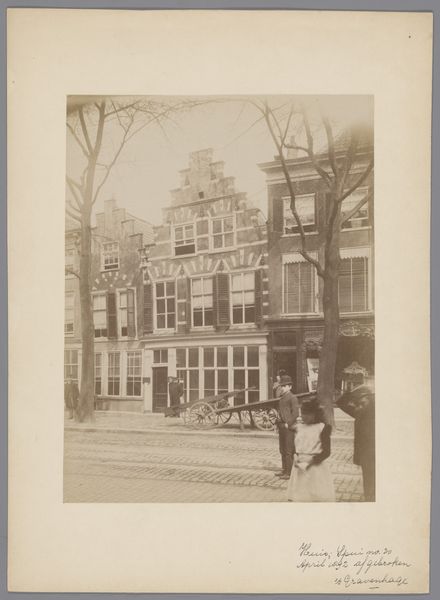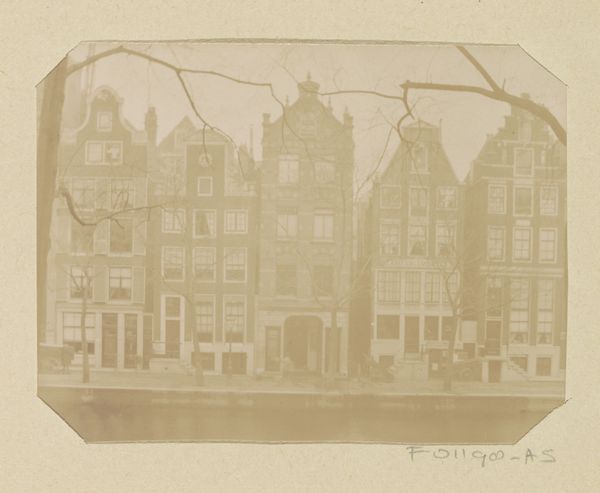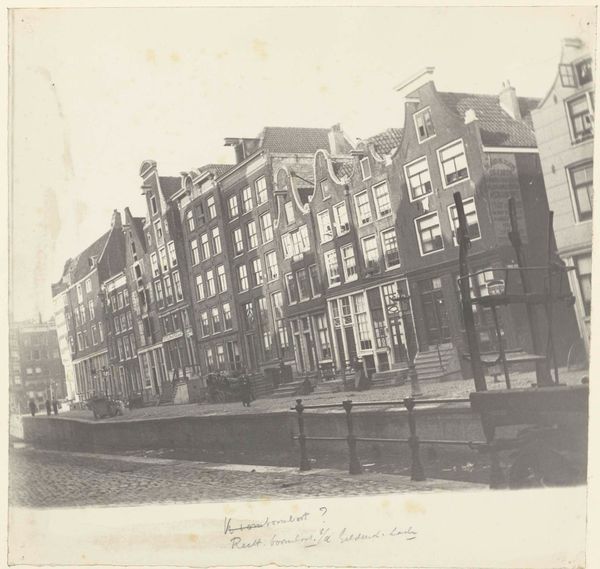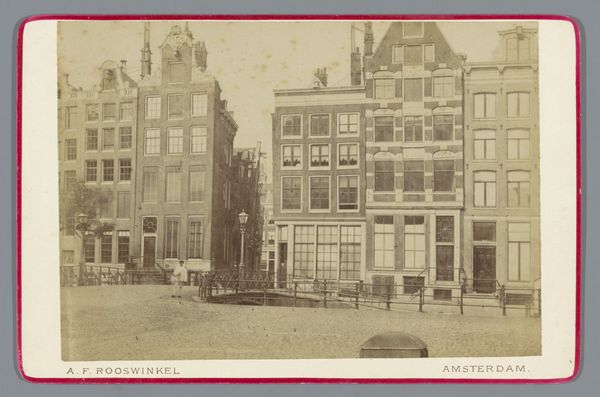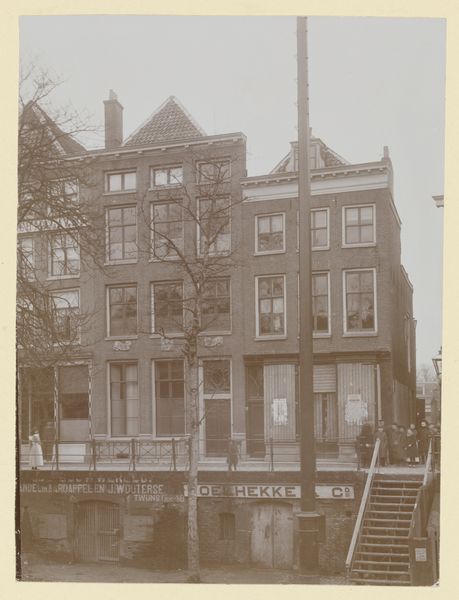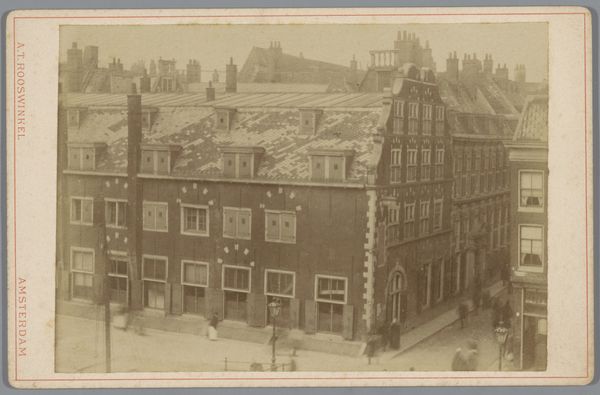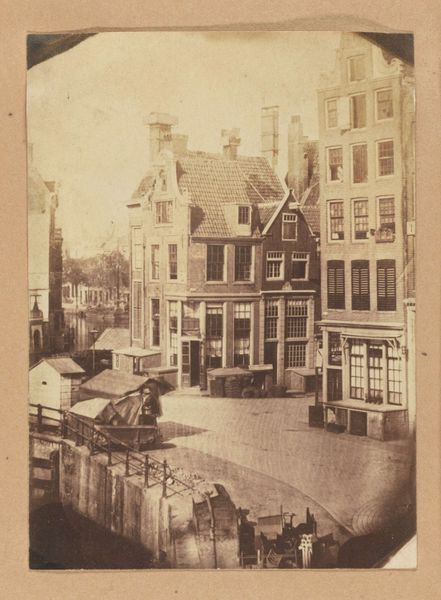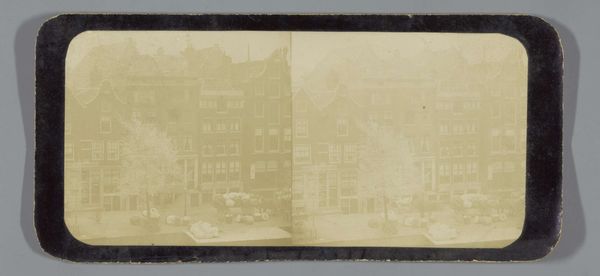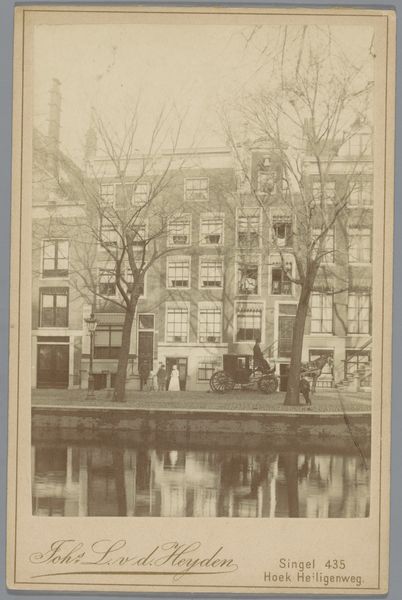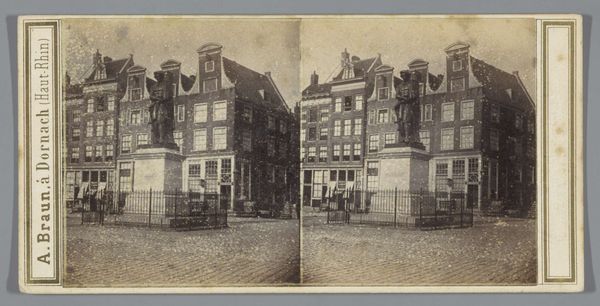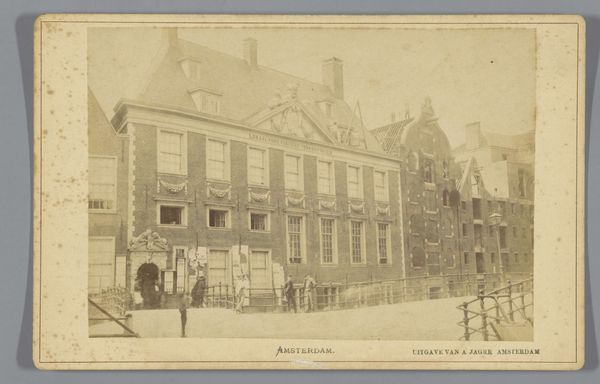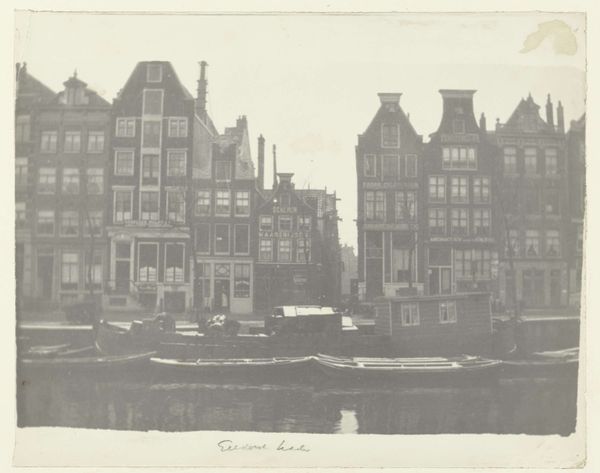
print, photography
#
dutch-golden-age
# print
#
street-photography
#
photography
#
cityscape
Dimensions: height 121 mm, width 174 mm, height 136 mm, width 199 mm
Copyright: Rijks Museum: Open Domain
Curator: This is an evocative street scene captured in “Gezicht op woningen aan een gracht te Amsterdam,” placing us in Amsterdam sometime between 1880 and 1902. Editor: It’s a captivating view. The muted tones lend a real solemnity to the buildings, a certain quiet that hangs over the canal and streets. I am interested in the materials of these buildings. Curator: Yes, the stepped gables carry a distinct symbolic resonance, evoking the Golden Age of Dutch prosperity and civic pride. Each façade a declaration of individuality, wealth, and status within the community. Editor: These stepped gables interest me so much. The buildings themselves are fascinating, and yet I am distracted by those human elements depicted at canal side, those working class residents just on the edge of the waterway who appear to be in action or contemplation. Are these the consumers whose existence keeps those wealthy façade appearances aloft? Curator: Precisely. Street photography here captures the zeitgeist—a moment suspended. It immortalizes not only the grand architectural statements, but the very people who breathe life into that setting. Editor: But it seems incomplete in a way, though, right? I feel like a photograph will never really let me perceive what it must have actually been like there along that gracht in Amsterdam. We get only an impression from a static chemical impression. We should not confuse documentation for reality. Curator: Perhaps…yet through a photographer’s very lens, this single exposure speaks profoundly of timeless human activities. The presence of everyday life persists along the water; those labors continue still. We look at that persistence and may feel in our collective psyche its impact on ourselves and our societies even now. Editor: And so we have these workers. Do you ever stop to consider where those particular workers’ daily earnings come from, to what extent are they rewarded? Maybe they, and not the façade, have been most unfairly silenced. Curator: It prompts interesting reflection on how deeply symbols speak—architectural pride, enduring human effort. A single photograph manages to elicit rich commentary. Editor: For me, too, I feel this photograph serves a larger truth. By seeing one aspect, such as the materials, of which that world of workers at that gracht were made, it does become so much richer than a document or a passing comment about beautiful architecture.
Comments
No comments
Be the first to comment and join the conversation on the ultimate creative platform.
